Nicola Leone
University of Calabria
Neuro-Symbolic AI for Compliance Checking of Electrical Control Panels
May 17, 2023



Abstract:Artificial Intelligence plays a main role in supporting and improving smart manufacturing and Industry 4.0, by enabling the automation of different types of tasks manually performed by domain experts. In particular, assessing the compliance of a product with the relative schematic is a time-consuming and prone-to-error process. In this paper, we address this problem in a specific industrial scenario. In particular, we define a Neuro-Symbolic approach for automating the compliance verification of the electrical control panels. Our approach is based on the combination of Deep Learning techniques with Answer Set Programming (ASP), and allows for identifying possible anomalies and errors in the final product even when a very limited amount of training data is available. The experiments conducted on a real test case provided by an Italian Company operating in electrical control panel production demonstrate the effectiveness of the proposed approach.
A Formal Comparison between Datalog-based Languages for Stream Reasoning (extended version)
Aug 26, 2022
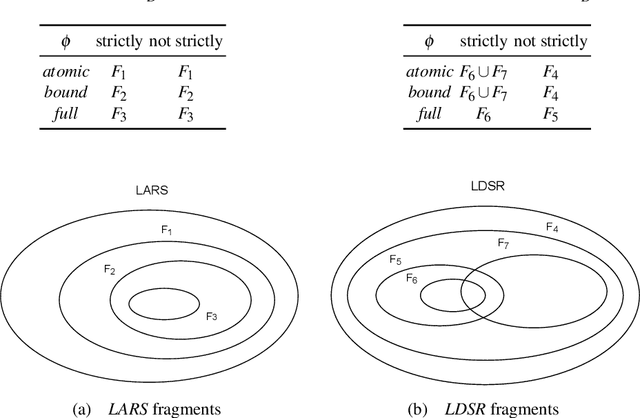
Abstract:The paper investigates the relative expressiveness of two logic-based languages for reasoning over streams, namely LARS Programs -- the language of the Logic-based framework for Analytic Reasoning over Streams called LARS -- and LDSR -- the language of the recent extension of the I-DLV system for stream reasoning called I-DLV-sr. Although these two languages build over Datalog, they do differ both in syntax and semantics. To reconcile their expressive capabilities for stream reasoning, we define a comparison framework that allows us to show that, without any restrictions, the two languages are incomparable and to identify fragments of each language that can be expressed via the other one.
Manipulation of Articulated Objects using Dual-arm Robots via Answer Set Programming
Oct 02, 2020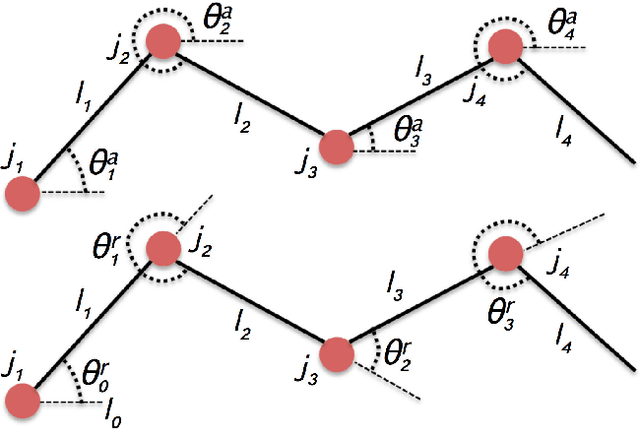
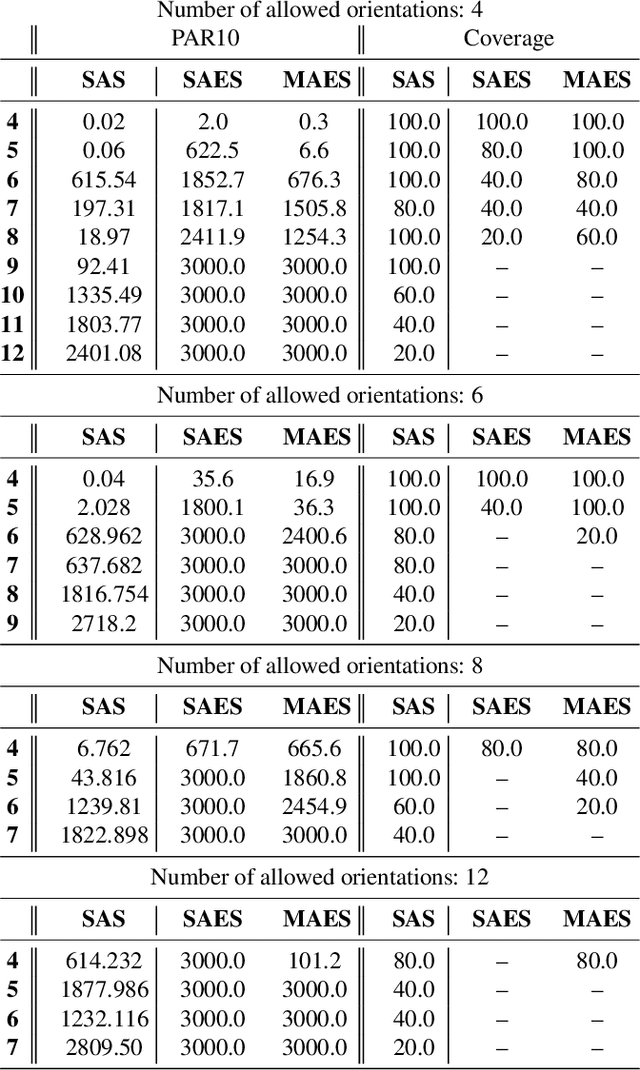
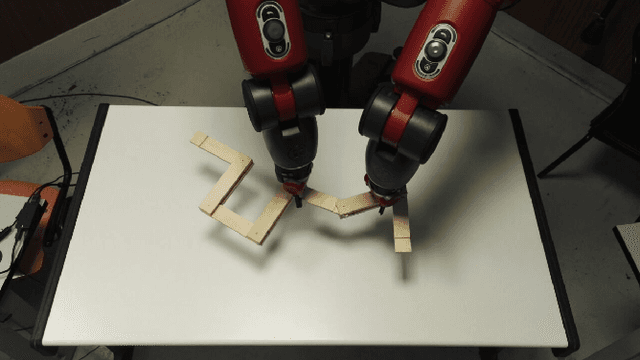
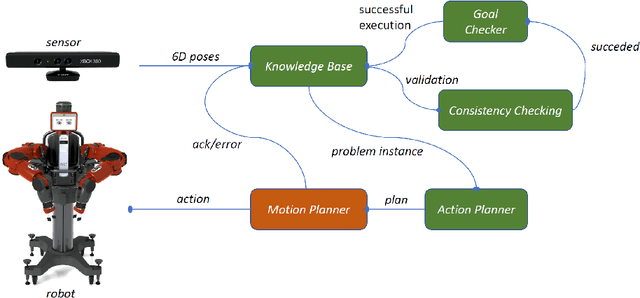
Abstract:The manipulation of articulated objects is of primary importance in Robotics, and can be considered as one of the most complex manipulation tasks. Traditionally, this problem has been tackled by developing ad-hoc approaches, which lack flexibility and portability. In this paper we present a framework based on Answer Set Programming (ASP) for the automated manipulation of articulated objects in a robot control architecture. In particular, ASP is employed for representing the configuration of the articulated object, for checking the consistency of such representation in the knowledge base, and for generating the sequence of manipulation actions. The framework is exemplified and validated on the Baxter dual-arm manipulator in a first, simple scenario. Then, we extend such scenario to improve the overall setup accuracy, and to introduce a few constraints in robot actions execution to enforce their feasibility. The extended scenario entails a high number of possible actions that can be fruitfully combined together. Therefore, we exploit macro actions from automated planning in order to provide more effective plans. We validate the overall framework in the extended scenario, thereby confirming the applicability of ASP also in more realistic Robotics settings, and showing the usefulness of macro actions for the robot-based manipulation of articulated objects. Under consideration in Theory and Practice of Logic Programming (TPLP).
Proceedings 36th International Conference on Logic Programming (Technical Communications)
Sep 19, 2020Abstract:Since the first conference held in Marseille in 1982, ICLP has been the premier international event for presenting research in logic programming. Contributions are solicited in all areas of logic programming and related areas, including but not restricted to: - Foundations: Semantics, Formalisms, Answer-Set Programming, Non-monotonic Reasoning, Knowledge Representation. - Declarative Programming: Inference engines, Analysis, Type and mode inference, Partial evaluation, Abstract interpretation, Transformation, Validation, Verification, Debugging, Profiling, Testing, Logic-based domain-specific languages, constraint handling rules. - Related Paradigms and Synergies: Inductive and Co-inductive Logic Programming, Constraint Logic Programming, Interaction with SAT, SMT and CSP solvers, Logic programming techniques for type inference and theorem proving, Argumentation, Probabilistic Logic Programming, Relations to object-oriented and Functional programming, Description logics, Neural-Symbolic Machine Learning, Hybrid Deep Learning and Symbolic Reasoning. - Implementation: Concurrency and distribution, Objects, Coordination, Mobility, Virtual machines, Compilation, Higher Order, Type systems, Modules, Constraint handling rules, Meta-programming, Foreign interfaces, User interfaces. - Applications: Databases, Big Data, Data Integration and Federation, Software Engineering, Natural Language Processing, Web and Semantic Web, Agents, Artificial Intelligence, Bioinformatics, Education, Computational life sciences, Education, Cybersecurity, and Robotics.
A logic-based decision support system for the diagnosis of headache disorders according to the ICHD-3 international classification
Aug 06, 2020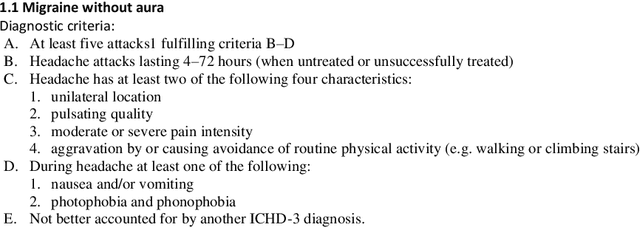
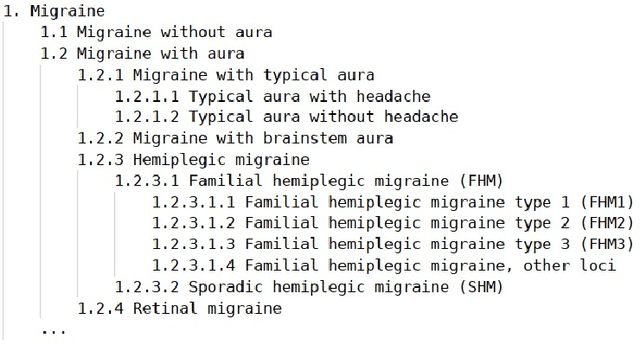
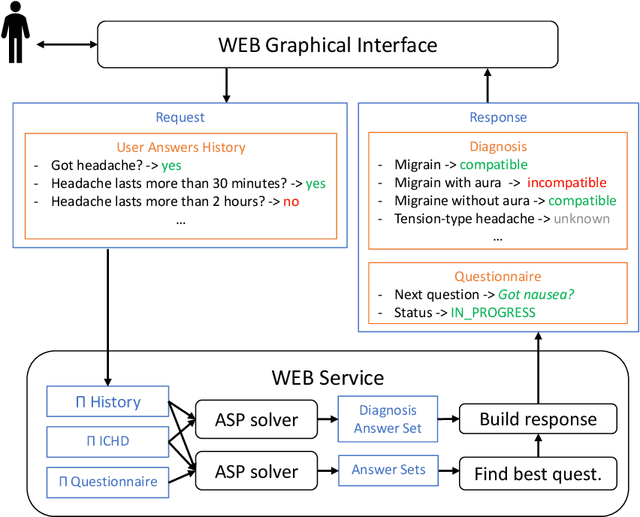
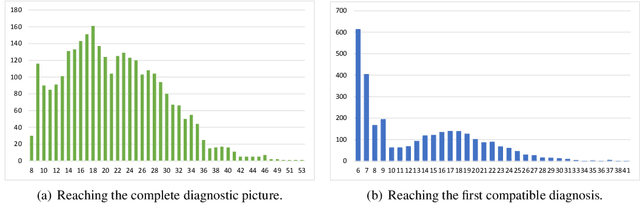
Abstract:Decision support systems play an important role in medical fields as they can augment clinicians to deal more efficiently and effectively with complex decision-making processes. In the diagnosis of headache disorders, however, existing approaches and tools are still not optimal. On the one hand, to support the diagnosis of this complex and vast spectrum of disorders, the International Headache Society released in 1988 the International Classification of Headache Disorders (ICHD), now in its 3rd edition: a 200 pages document classifying more than 300 different kinds of headaches, where each is identified via a collection of specific nontrivial diagnostic criteria. On the other hand, the high number of headache disorders and their complex criteria make the medical history process inaccurate and not exhaustive both for clinicians and existing automatic tools. To fill this gap, we present HEAD-ASP, a novel decision support system for the diagnosis of headache disorders. Through a REST Web Service, HEAD-ASP implements a dynamic questionnaire that complies with ICHD-3 by exploiting two logical modules to reach a complete diagnosis while trying to minimize the total number of questions being posed to patients. Finally, HEAD-ASP is freely available on-line and it is receiving very positive feedback from the group of neurologists that is testing it.
ASP-Core-2 Input Language Format
Nov 11, 2019Abstract:Standardization of solver input languages has been a main driver for the growth of several areas within knowledge representation and reasoning, fostering the exploitation in actual applications. In this document we present the ASP-Core-2 standard input language for Answer Set Programming, which has been adopted in ASP Competition events since 2013.
Precomputing Datalog evaluation plans in large-scale scenarios
Jul 29, 2019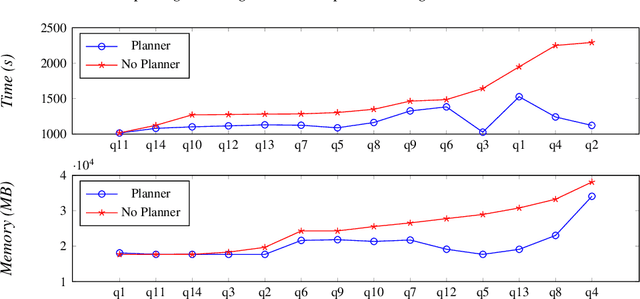
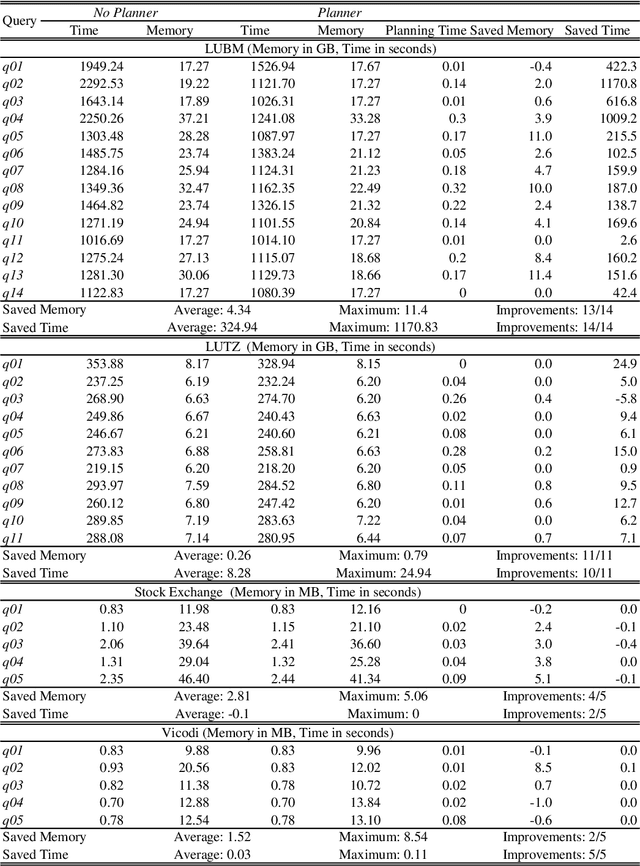
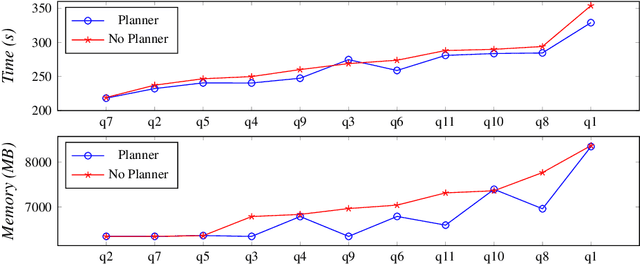

Abstract:With the more and more growing demand for semantic Web services over large databases, an efficient evaluation of Datalog queries is arousing a renewed interest among researchers and industry experts. In this scenario, to reduce memory consumption and possibly optimize execution times, the paper proposes novel techniques to determine an optimal indexing schema for the underlying database together with suitable body-orderings for the Datalog rules. The new approach is compared with the standard execution plans implemented in DLV over widely used ontological benchmarks. The results confirm that the memory usage can be significantly reduced without paying any cost in efficiency. This paper is under consideration in Theory and Practice of Logic Programming (TPLP).
Enhancing magic sets with an application to ontological reasoning
Jul 19, 2019

Abstract:Magic sets are a Datalog to Datalog rewriting technique to optimize query answering. The rewritten program focuses on a portion of the stable model(s) of the input program which is sufficient to answer the given query. However, the rewriting may introduce new recursive definitions, which can involve even negation and aggregations, and may slow down program evaluation. This paper enhances the magic set technique by preventing the creation of (new) recursive definitions in the rewritten program. It turns out that the new version of magic sets is closed for Datalog programs with stratified negation and aggregations, which is very convenient to obtain efficient computation of the stable model of the rewritten program. Moreover, the rewritten program is further optimized by the elimination of subsumed rules and by the efficient handling of the cases where binding propagation is lost. The research was stimulated by a challenge on the exploitation of Datalog/\textsc{dlv} for efficient reasoning on large ontologies. All proposed techniques have been hence implemented in the \textsc{dlv} system, and tested for ontological reasoning, confirming their effectiveness. Under consideration for publication in Theory and Practice of Logic Programming.
On the Computation of Paracoherent Answer Sets
Jul 21, 2017
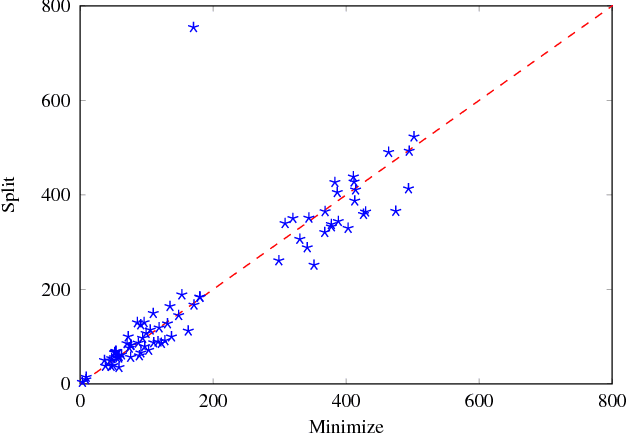

Abstract:Answer Set Programming (ASP) is a well-established formalism for nonmonotonic reasoning. An ASP program can have no answer set due to cyclic default negation. In this case, it is not possible to draw any conclusion, even if this is not intended. Recently, several paracoherent semantics have been proposed that address this issue, and several potential applications for these semantics have been identified. However, paracoherent semantics have essentially been inapplicable in practice, due to the lack of efficient algorithms and implementations. In this paper, this lack is addressed, and several different algorithms to compute semi-stable and semi-equilibrium models are proposed and implemented into an answer set solving framework. An empirical performance comparison among the new algorithms on benchmarks from ASP competitions is given as well.
Driving CDCL Search
Nov 16, 2016


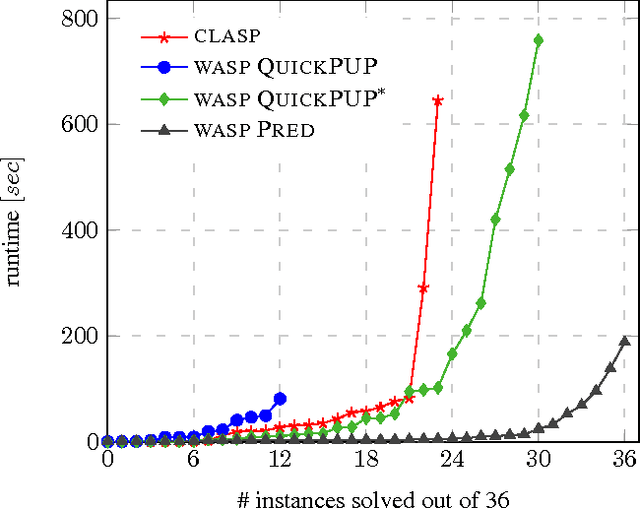
Abstract:The CDCL algorithm is the leading solution adopted by state-of-the-art solvers for SAT, SMT, ASP, and others. Experiments show that the performance of CDCL solvers can be significantly boosted by embedding domain-specific heuristics, especially on large real-world problems. However, a proper integration of such criteria in off-the-shelf CDCL implementations is not obvious. In this paper, we distill the key ingredients that drive the search of CDCL solvers, and propose a general framework for designing and implementing new heuristics. We implemented our strategy in an ASP solver, and we experimented on two industrial domains. On hard problem instances, state-of-the-art implementations fail to find any solution in acceptable time, whereas our implementation is very successful and finds all solutions.
 Add to Chrome
Add to Chrome Add to Firefox
Add to Firefox Add to Edge
Add to Edge